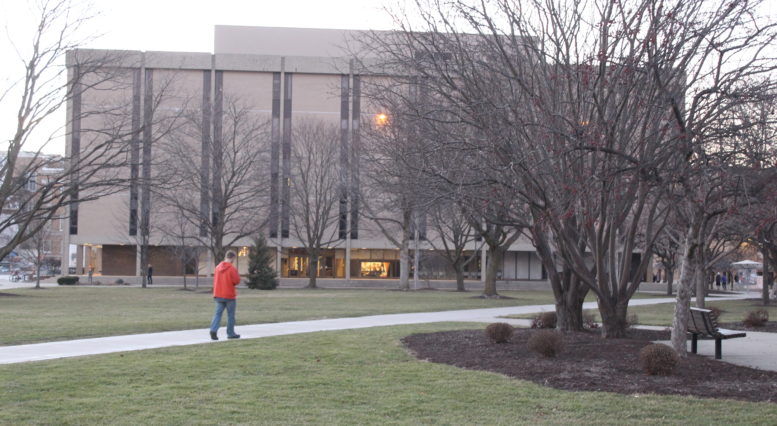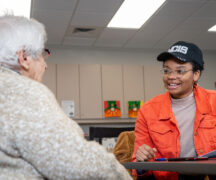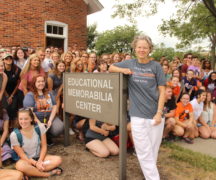By DAVID DUPONT
BG Independent News
BGSU Professor Jonathan Bostic has landed a $324,764 grant from the National Science Foundation as part of a nationwide study aimed at helping middle school math teachers find the best teaching methods.
The work that Bostic and fellow lead investigators will do follows up on an ongoing investigation into how middle school math teachers decide what materials – textbooks, work sheets, quizzes, they should use in the classroom.
To date, he said, “there’s not a clear message about how teacher make those decisions and ways we can support teacher in making those decisions. … We had small pockets of information but nothing really synthesized.”
Those few studies that have been done lack verifiability, he said. “We can’t answer the question how we know what we know from them.”
The recent grant for BGSU was announced recently by U.S. Senator Sherrod Brown (D-Ohio). Brown was co-sponsor of the Supporting Early Career Researchers Act that supplied the funding. Brown said in a statement: “This award will help ensure the next generation of Ohioans have the tools they need for success.”
The NSF grant for the national study was for $2.9 million.
The goal is to have robust results that meet the highest standards for educational research.
Bostic, an associate professor of mathematics education, said the earlier research gathered extensive data using interviews and very focused surveys conducted face to face. These were time consuming and required pulling teachers from the classroom, the very place they needed to be spending their time.
Using that information the researchers designed a framework about how middle teachers decide materials to use.
The researchers then approached Bostic, and two other researchers, Toni May and Kristin Koskey of Drexel with strong skills in quantitative methods, to take the data and create surveys that could be more broadly used.
“When we make a survey and a better instruments, teachers can start having conversations with each other, with administrators. They can make decisions why they do what they do,” he said.
What these quantitative surveys will not be used for is high stakes evaluations. This is not about “judging” teachers, Bostic said. It’s about giving them information they have been requesting to help them teach better.
He expects these surveys will take about a year to develop. The surveys will focus on elements that can be observed.
Then the researchers will head into the classrooms to see if teachers are actually doing what they say they’re doing and how those decisions are playing out in the classroom.
This can identify for teachers what they are doing well, though they may not realize it, as well as areas where they have room for growth.
“This is about supporting teachers and students,” he said.
The research will be publicly available, be applicable for a broad range of educators including teachers and math coaches, and employ best practices.
“Ultimately,” Bostic said, “it’s supporting all students to be mathematically proficient citizens.”





